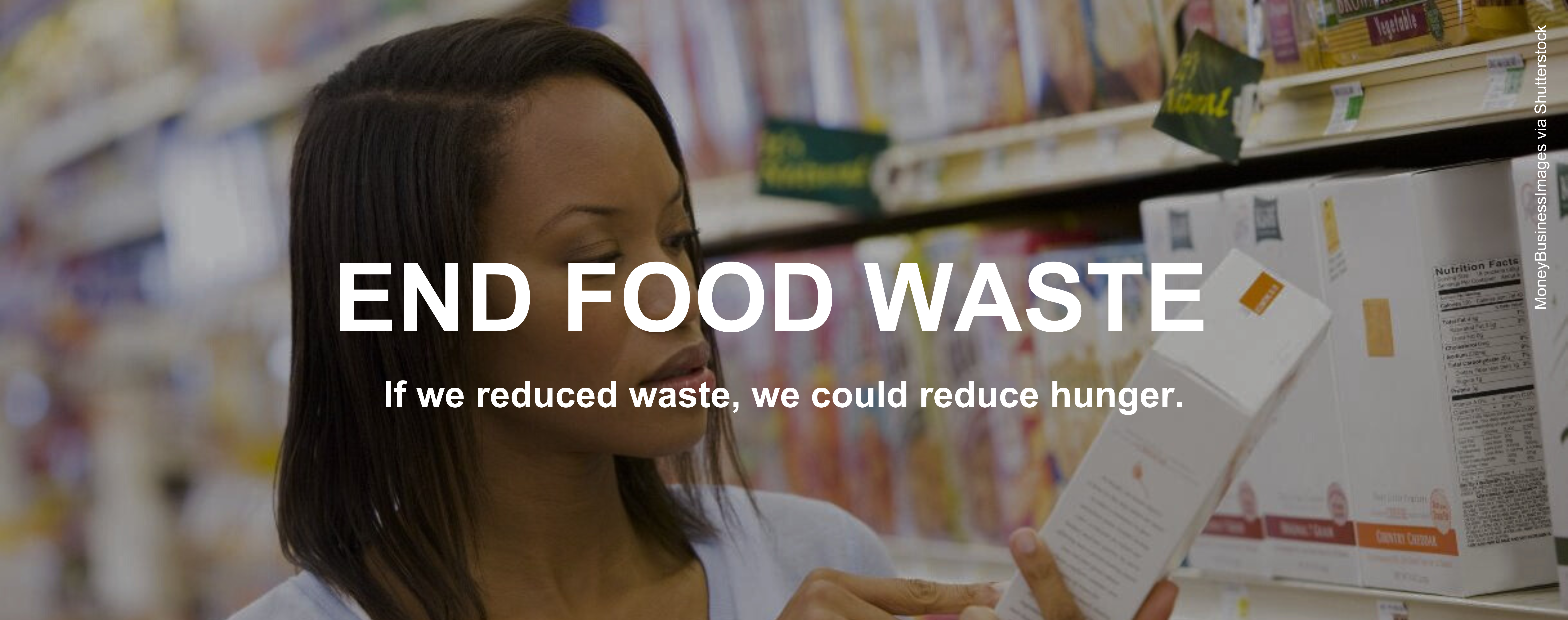End Food Waste
The United States wastes roughly 35% of its total food supply each year.
Let that sink in for a minute: For every 10 pounds of food that is grown, harvested, processed, distributed and then sold, more than three pounds ends up getting thrown away or discarded. That adds up to around 1,000 pounds of food per person each year.
And according to the United Nations, globally we could feed a whopping 2 billion people with all the food we produce but don’t end up using. That’s twice the number of undernourished people in the world — meaning if we reduced the waste, we could (with the right distribution system) theoretically feed the world on the same amount of food we produce now, or even less.
And it’s not just that we could feed the hungry with all that food — the resources involved in creating that waste are staggering:
Food waste wastes more than just food
Every year, the resources committed to wasted food alone include:
- Land: Over 140 million acres of agricultural land, an area the size of California and New York state combined;
- Water: 5.9 trillion gallons of fresh water, equivalent to the water use of well over a third of all U.S. households;
- Energy: 664 terawatt-hours of energy, enough to power over 50 million U.S. homes for a year.
- Our climate and our health: The production of wasted food and the waste itself make up 4% of annual U.S. greenhouse gas emissions. And it takes 778 million pounds of pesticides to grow food that is later wasted. These chemicals can threaten pollinators, endangered species and human health.
What’s one of the most absurd sources of food waste? The food that gets thrown away that is perfectly safe to eat but gets discarded due to incorrect or confusing information on the label.
How standardizing food dating labels could curb food waste
It turns out one reason so much perfectly usable food goes to waste is the current patchwork of date labels used across different food products, which can often be more confusing than helpful to the consumer. Think of how many different terms you see on food right now — “sell by,” “best by,” “use by,” “freshest on,” “expires on,” and a handful of others.
A 2016 study found that some 80% of consumers throw away food that is at or near the “date” label at least some of the time — even though in reality, the dates are typically just a manufacturer’s best guess as to when a product will no longer be at peak freshness. According to a 2019 Food and Drug Administration report, “Consumer uncertainty about the meaning of the dates that appear on the labels of packaged foods is believed to contribute to about 20% of food waste in the home.”
Now, enter the federal bipartisan Food Date Labeling Act, which would establish an easily understood food date labeling system: One clear phrase to communicate that the quality of the food product may begin to deteriorate after a certain date, and another to mark the date after which the product should not be consumed.
It’s a commonsense, broadly popular solution that would keep money in people’s pockets and put food on people’s plates instead of in landfills. The bill could potentially erase nearly 800,000 tons of food waste every year.
Together, we can put a major dent in our country’s food waste.

